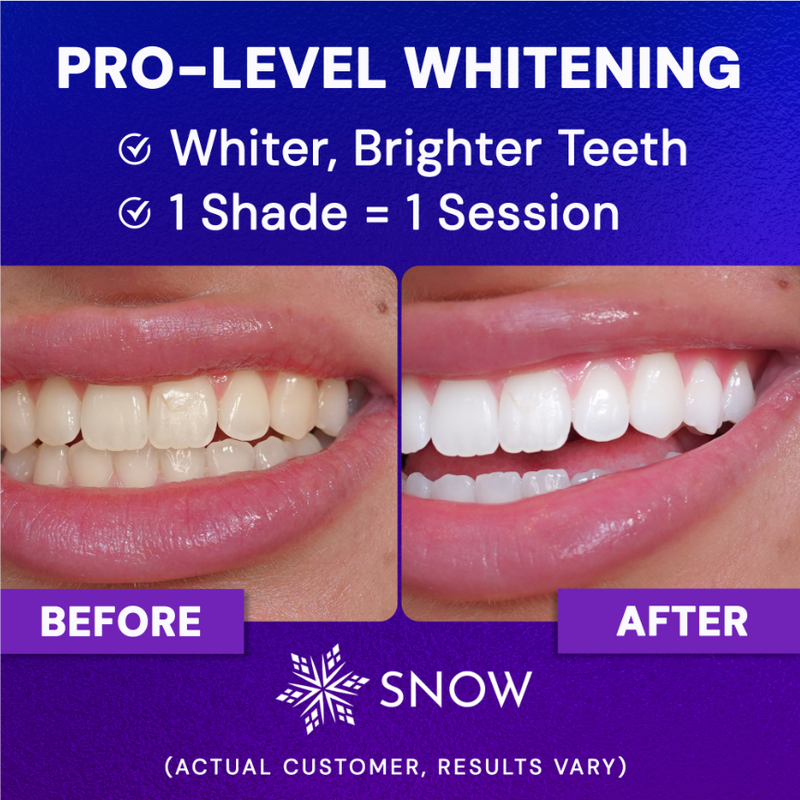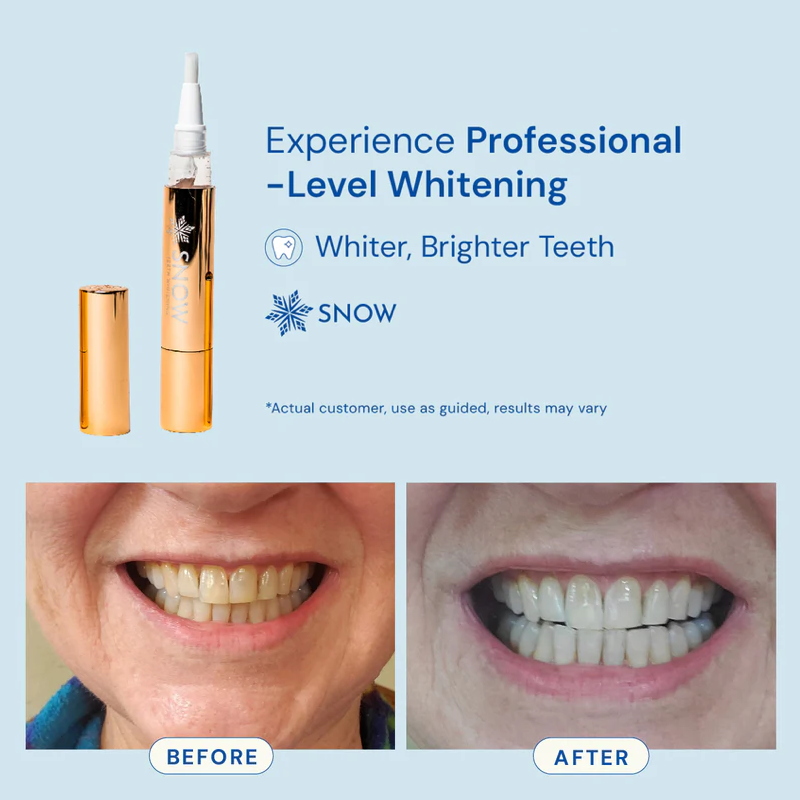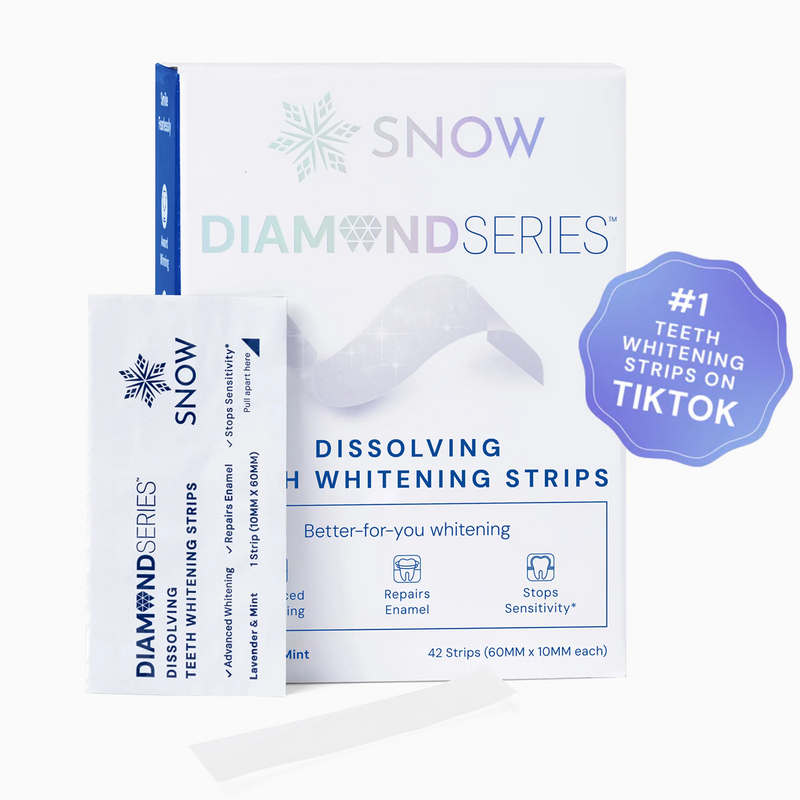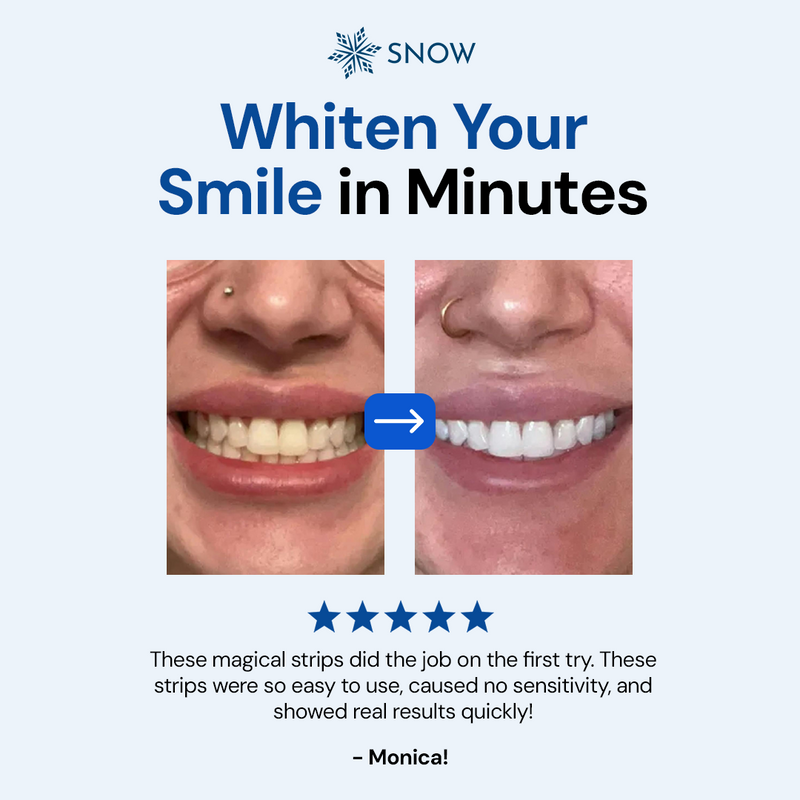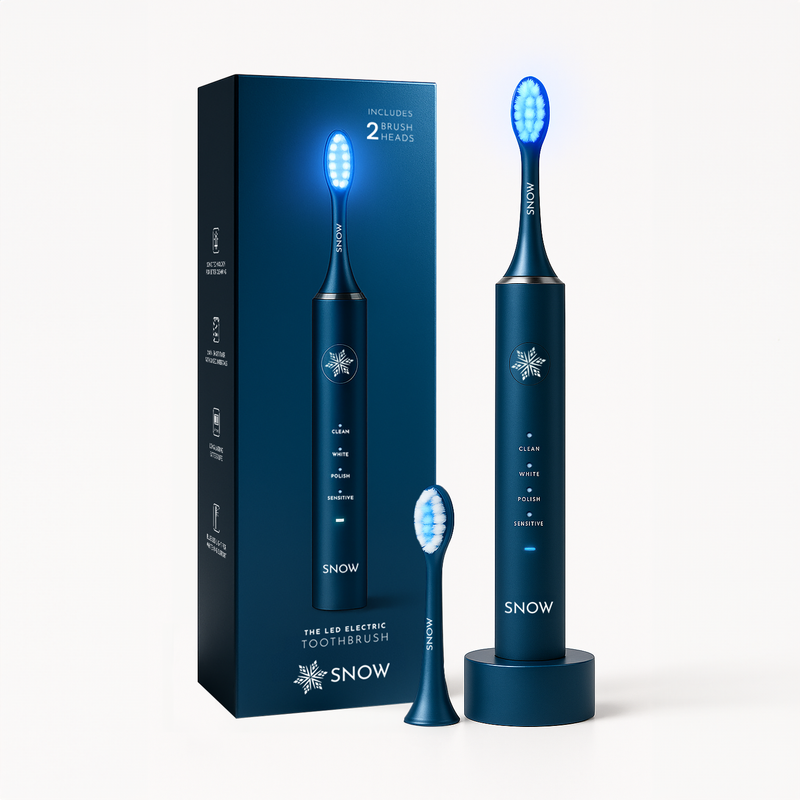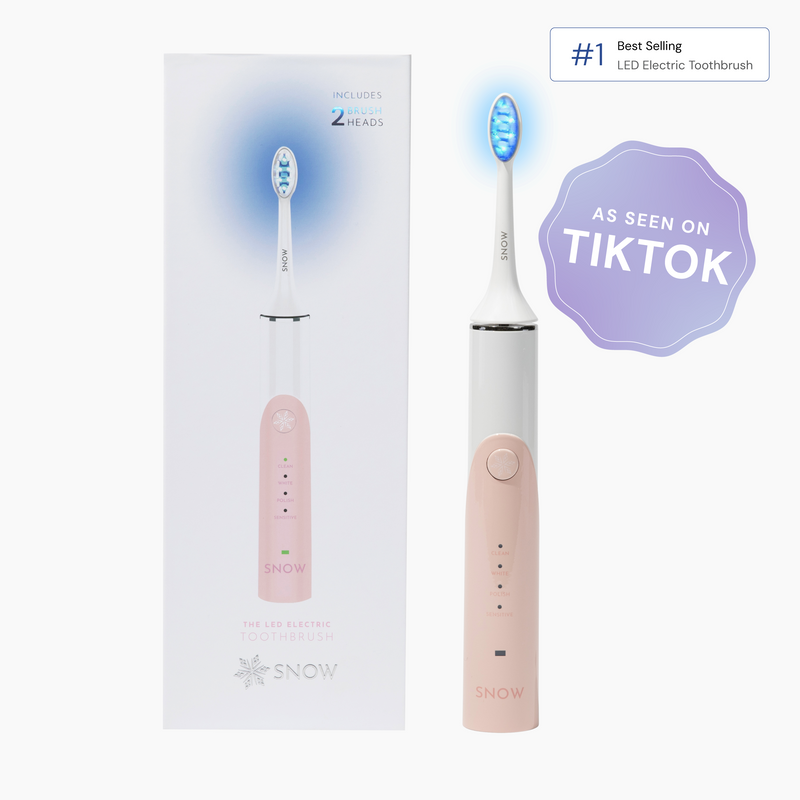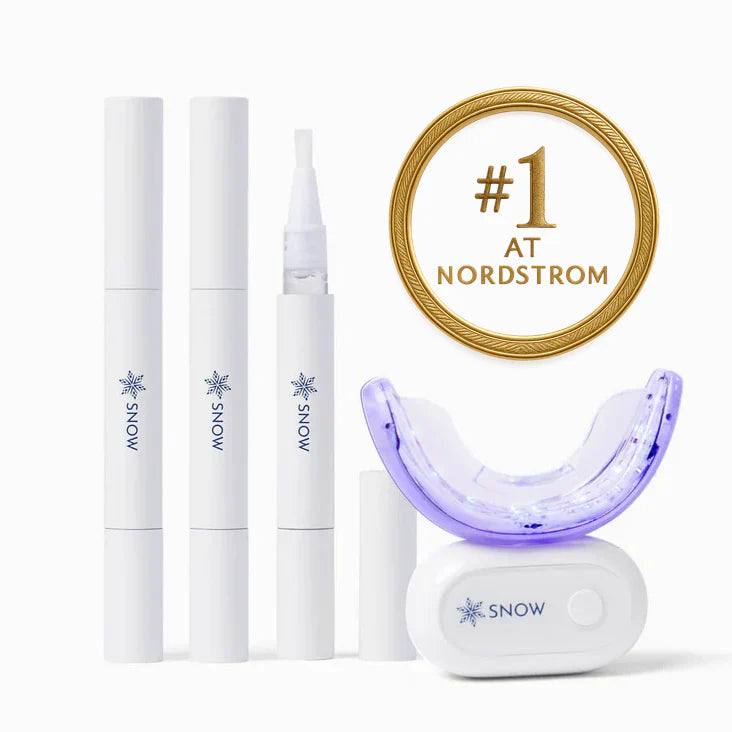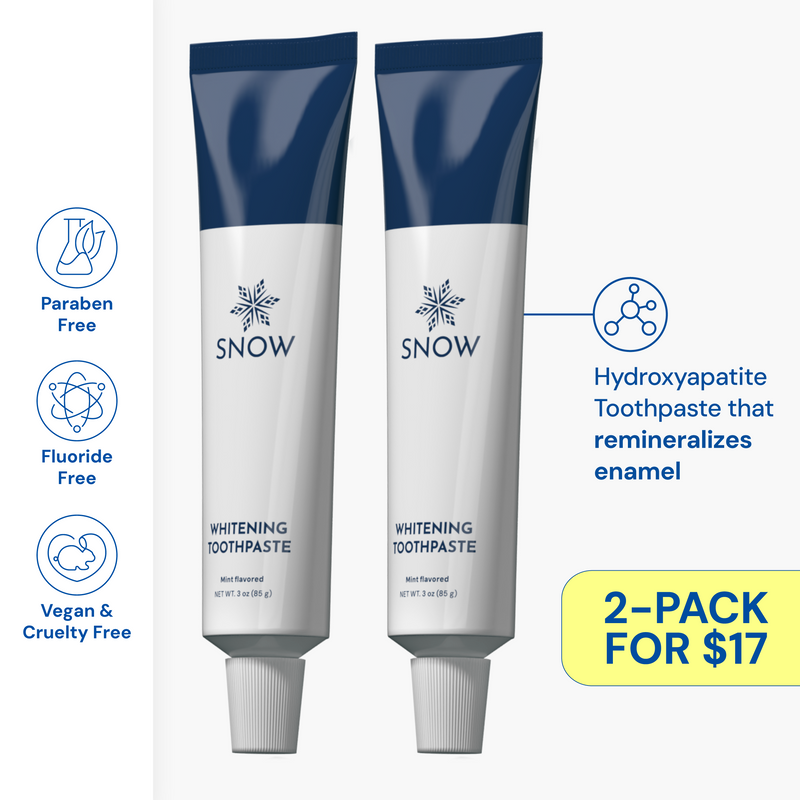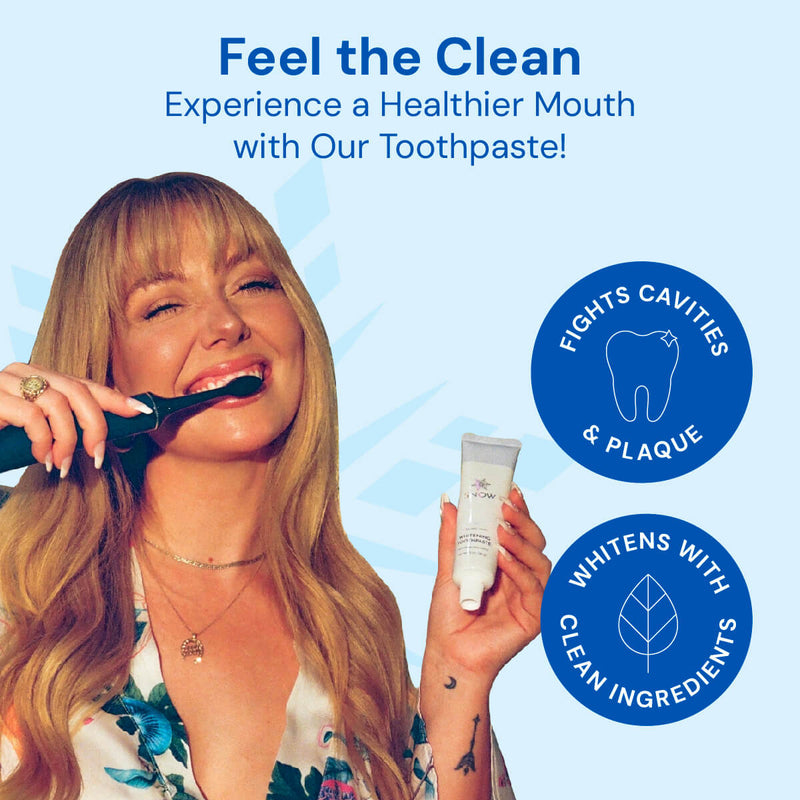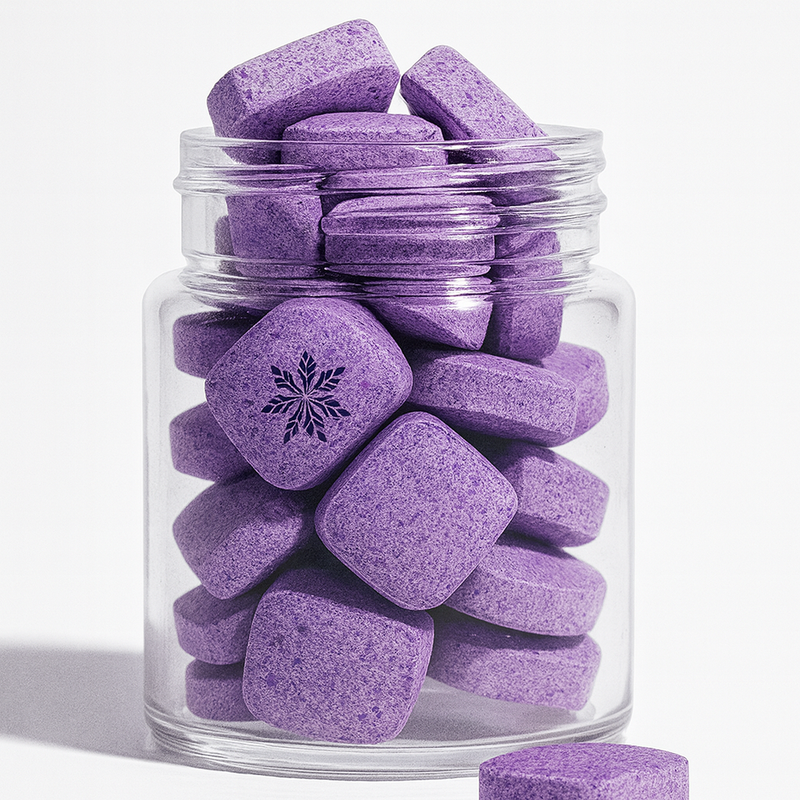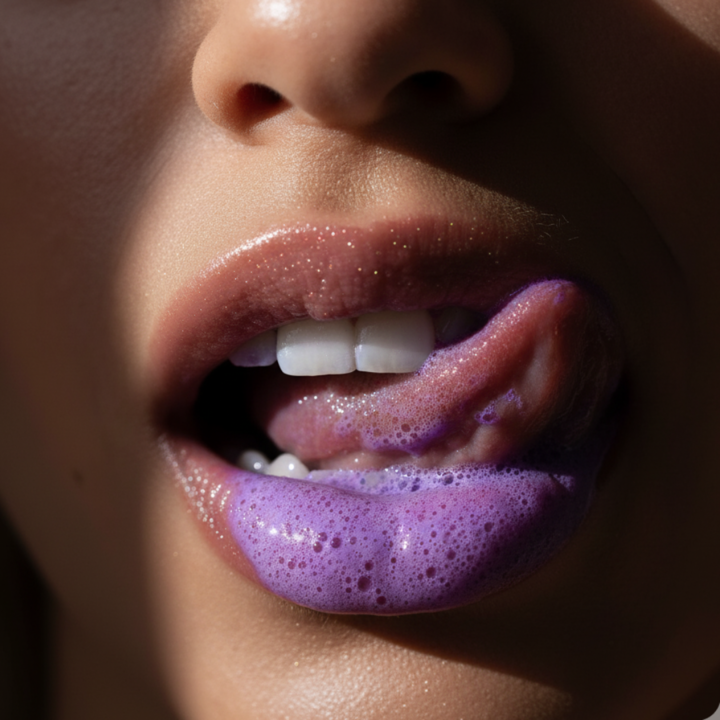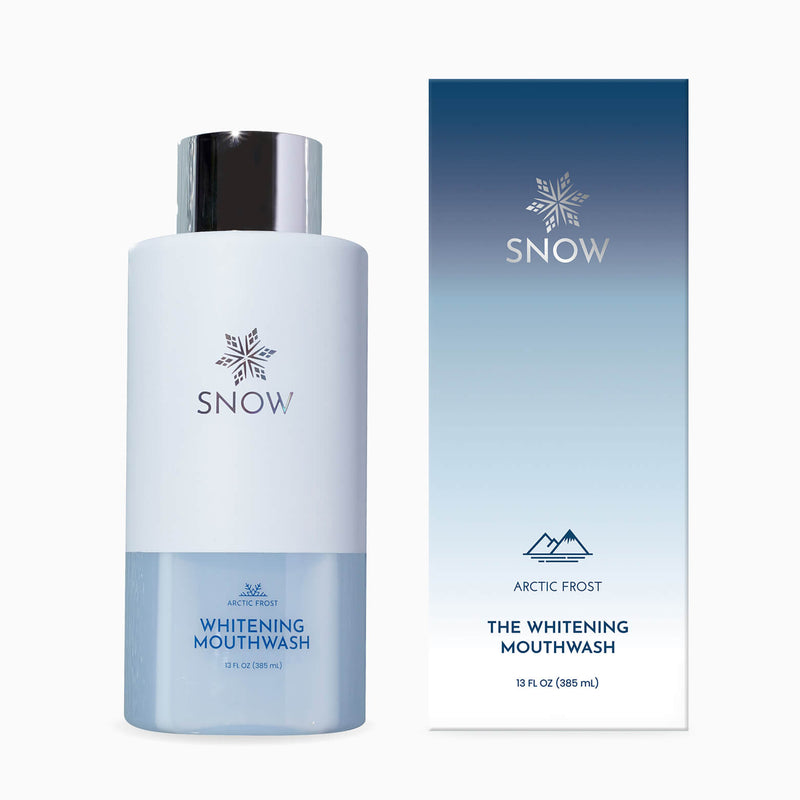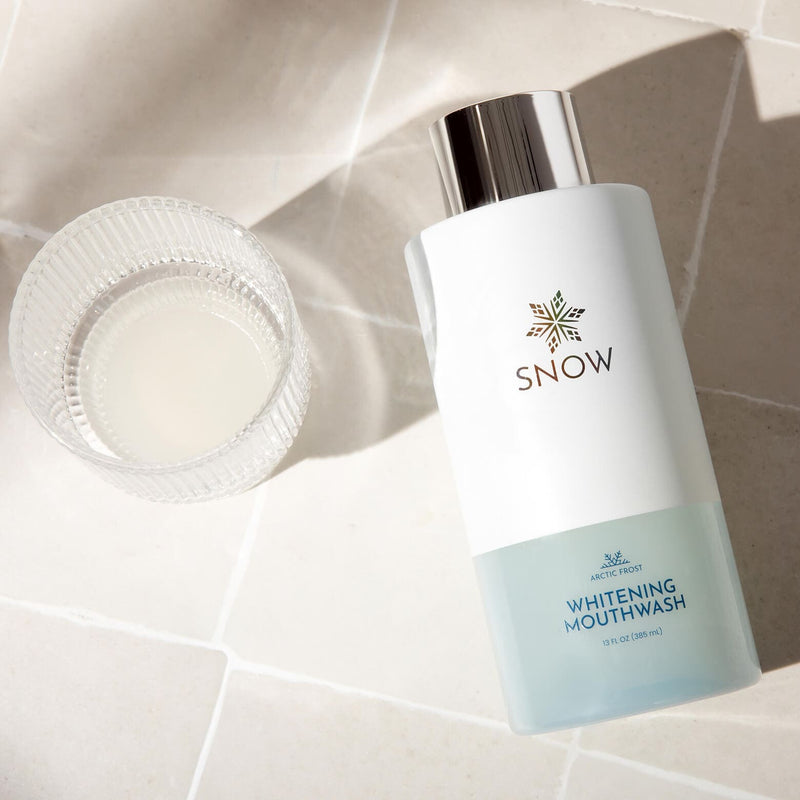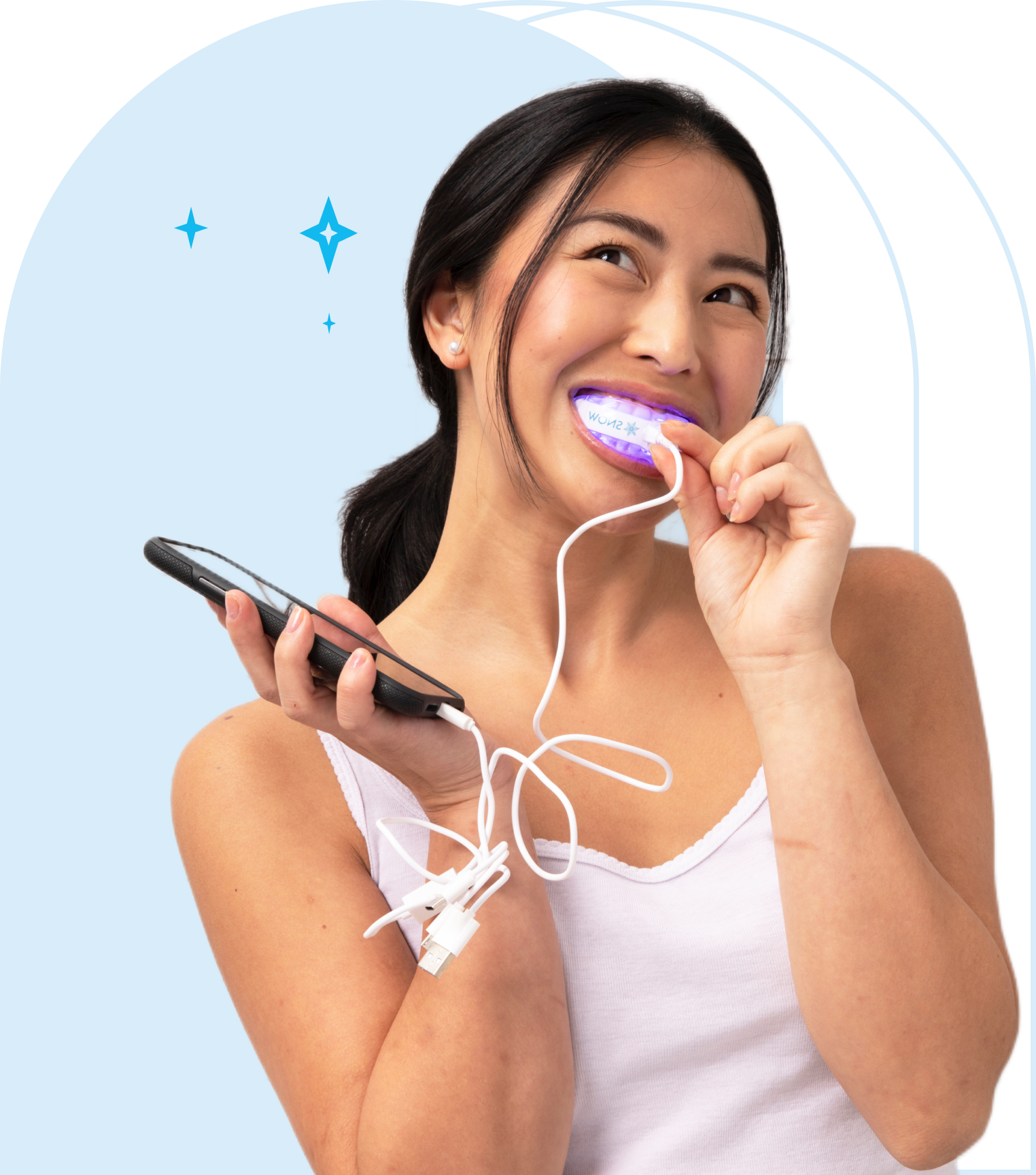Whitening your smile is just the beginning. After using whitening strips, your enamel becomes more sensitive and needs time to recover.
If you're asking, can I use mouthwash after whitening strips, the answer is yes, but only after waiting 30 to 60 minutes—then review steps to take after mouthwash ingestion in case a small sip is swallowed.
This short delay helps protect your oral health, supports whitening agents, and minimizes tooth sensitivity.
Whether you're using teeth whitening strips for the first time or fine-tuning your oral care routine, post-treatment habits can help you avoid uneven whitening and maintain long-lasting brightness.
Key Takeaways
-
Wait at least 30 to 60 minutes after using whitening strips before using mouthwash to allow enamel to reharden and maximize whitening effects.
-
Choose an alcohol-free and fluoride mouthwash for post-whitening care to reduce sensitivity and support enamel remineralization.
-
Maintain oral hygiene with regular brushing, flossing, and the use of sensitivity toothpaste to protect enamel and prolong whitening results. What Whitening Strips Do to Your Teeth
What Whitening Strips Do to Your Teeth
Before diving into post whitening care, it's important to understand how whitening strips work and why they require mindful follow-up.
Most whitening strips use active ingredients like hydrogen peroxide or carbamide peroxide, which are powerful bleaching agents designed to lift surface stains from the enamel.
How Whitening Agents Work
To brighten your smile effectively, whitening strips rely on well-studied chemistry:
-
Hydrogen peroxide and carbamide peroxide break down stain molecules in the enamel through oxidation.
-
These whitening agents penetrate the tooth surface and target deep-set discoloration.
-
The strips themselves are flexible plastic strips coated with a safe concentration of whitening gel.
-
The whitening process continues for several hours, even after removing the strip, which is why timing your next oral care steps is crucial.
Enamel Effects After Whitening
The bleaching agents used in whitening strips can temporarily soften tooth enamel. This makes teeth more vulnerable to irritation, sensitive teeth, or gum irritation if follow-up care is rushed:
-
Some users may experience tooth sensitivity for one to two weeks.
-
If excess whitening gel is not removed, it may cause discomfort along the gum line.
-
The softened enamel requires time to reharden, making immediate brushing or use of mouthwash potentially harmful.
For those prone to sensitive teeth, consider using SNOW Whitening Strips, which are formulated with comfort in mind and offer a gentle yet effective teeth whitening experience.
Why Timing Matters After Using Whitening Strips
After applying whitening strips, your teeth go through more than just a cosmetic transformation. The whitening treatment continues to work for a short time even after the strips are removed.
Understanding this process and timing your next steps properly helps protect your dental health and ensure the best possible whitening results.
When whitening agents like hydrogen peroxide or carbamide peroxide come into contact with your enamel, they break down surface stains by releasing oxygen molecules.
This reaction softens the enamel temporarily, which means your teeth are more vulnerable to sensitivity and damage if not cared for properly.
Let’s look at what happens right after you remove the strips and why a brief waiting period is essential to support strong oral hygiene and long-lasting results.
Immediate Rinsing Tips
The first thing you should do after taking off the whitening strips is rinse. It may seem like a small step, but it plays a big role in protecting your teeth and gums.
-
Rinse your mouth gently with lukewarm water to remove any residual gel left behind on the teeth or along the gum line.
-
Do not brush your teeth immediately. Brushing too soon, especially with abrasive toothpaste, can irritate the enamel that has just been softened by the whitening gel.
-
This initial rinse also helps eliminate any food particles or leftover ingredients that could cause gum irritation or interfere with the ongoing whitening process.
If you’re unsure about the best way to proceed, a dental professional can guide you on product-specific care tips, especially if you are using advanced strips like SNOW’s Whitening Strips, which are gentle yet effective.
Enamel Rehardening Window
Patience is part of the process. Giving your enamel time to recover after whitening can make a big difference in how your smile looks and feels.
-
Allow a 30 to 60 minute window before eating, brushing, or using other oral products. During this time, your tooth enamel begins to reharden naturally.
-
This waiting period also allows the hydrogen peroxide to continue breaking down surface stains, maximizing the whitening effects.
-
Skipping this recovery time can lead to increased tooth sensitivity, less effective whitening, and a greater chance of enamel wear.
Taking a short pause protects your enamel and helps your whitening agents work more efficiently. For best results, follow the recommended oral hygiene guidelines from your whitening product or consult with a dental professional.
Common Mistakes to Avoid
It's easy to make post-whitening mistakes if you're in a hurry or not aware of what to avoid. However, these common missteps can interfere with your results and impact your overall dental health.
-
Avoid brushing teeth immediately after removing strips. Wait until the enamel has rehardened before using a toothbrush, even if you're eager to clean up.
-
Do not use alcohol-based mouthwash right away. These can cause irritation or dryness, especially when your mouth is still adjusting to the whitening treatment.
-
Refrain from eating staining foods and drinks such as red wine, berries, or other highly pigmented foods during the first few hours. These can re-stain softened enamel and undo the whitening effects.
Following these steps will help protect your oral hygiene and ensure that your smile remains bright and healthy after each whitening session.
What Mouthwash Is Safe After Whitening?
If you're wondering whether mouthwash is okay after whitening strips, the answer is yes — but you need to choose the right type. The best mouthwashes after whitening are those that support enamel recovery and reduce sensitivity.
Alcohol-Free Mouthwash
Gentle care matters most:
-
Choose an alcohol free mouthwash to avoid drying out your mouth or irritating sensitive areas (use mouthwash before or after brushing)
-
Alcohol can exacerbate tooth sensitivity and gum irritation.
-
SNOW's whitening mouthwash is alcohol-free and designed to be part of a safe oral hygiene routine.
Fluoride Mouthwash
Fluoride helps rebuild strength:
-
Fluoride mouthwash supports overall oral health by aiding tooth enamel remineralization.
-
It helps counteract temporary softness after whitening.
-
This is especially helpful for individuals with sensitive teeth or thinning enamel.
Ingredients to Avoid
Steer clear of strong formulations:
-
Avoid mouthwashes with menthol, strong flavorings, or added peroxide unless directed by a dental professional.
-
Harsh ingredients can disrupt enamel recovery and lead to tooth discoloration or gum irritation.
How to Manage Sensitivity After Whitening
Managing tooth sensitivity after whitening is one of the most common concerns. Incorporating the right strategies can make your whitening treatment more comfortable and sustainable.
Use Sensitivity Toothpaste
Care starts with the basics:
-
Use whitening toothpaste formulated for sensitive teeth.
-
Look for ingredients like potassium nitrate or stannous fluoride.
-
SNOW Whitening Toothpaste offers gentle whitening while also protecting enamel.
Avoid Acidic Foods and Drinks
Help your enamel recover:
-
Refrain from highly pigmented foods, acidic drinks, and red wine for at least 48 hours.
-
These can re-stain or worsen tooth sensitivity.
-
Stick to a bland, soft diet and drink water to flush out food particles.
Switch to a Soft Toothbrush
Protect your enamel with better tools:
-
Use a soft bristled toothbrush to brush your teeth without abrasion.
-
Brushing too hard or with firm bristles may cause gum irritation.
-
SNOW’s LED Whitening Electric Toothbrush comes with soft, enamel-safe bristles for effective cleaning and whitening.
What to Avoid Right After Whitening Strips
What you don’t do after applying whitening strips can make or break your results. Being mindful of your habits right after treatment helps protect your enamel and supports good oral health.
Stay Away from Staining Foods and Beverages
To keep your results from fading too quickly, it’s important to make smart food choices immediately after whitening.
-
Avoid staining foods such as tomato-based sauces, soy sauce, and highly pigmented foods like berries or beets.
-
Skip red wine, coffee, dark teas, and sodas, as they can easily undo your progress.
-
Rinse your mouth with water after eating or drinking if you can’t avoid these items entirely.
Avoid Tobacco Use for Better Oral Health
Tobacco products are one of the fastest ways to stain your teeth after whitening.
-
Smoking or chewing tobacco exposes your teeth to staining substances that cling to softened enamel.
-
It also increases the risk of gum line irritation, making it harder to maintain a healthy, bright smile.
-
For long-lasting results, steer clear of tobacco at least for the first 48 hours after treatment.
Don’t Whiten Right Before Meals or Drinks
When it comes to whitening timing, a little planning goes a long way.
-
Wait before eating or drinking after whitening to allow the active ingredients time to fully work.
-
Whitening agents like hydrogen peroxide and carbamide peroxide continue breaking down stains even after the strips are removed.
-
Exposing your teeth to heat, acids, or colorants too soon can interfere with the whitening process and increase sensitivity.
Following usage guidelines and delaying your next snack or drink, even water, gives the whitening gel a chance to do its job effectively. If unsure, seek professional advice for the best whitening schedule for your needs.
With regular brushing, mindful habits, and proper post-whitening care, you can extend your results and support your long-term oral health.
Long-Term Care for a Whiter Smile
Caring for your smile doesn't end when the whitening strips come off. Long-term success depends on building healthy habits and integrating the right products into your oral care routine.
Start by Using Whitening Products Weekly
To maintain your results between treatments, consistency matters.
-
Use whitening toothpaste or SNOW’s Magic Whitening Booster once or twice a week to gently remove plaque and lift surface stains.
-
These whitening products are designed to prevent new discoloration while supporting overall oral health.
Continue with Regular Dental Visits
Routine checkups are essential for keeping your smile both bright and healthy.
-
Visit your dentist regularly to track whitening progress and monitor enamel condition.
-
A dental professional can give you customized advice based on your oral health and whitening goals.
Refresh Results with Occasional Whitening
Even with great habits, stains can return over time. Touch-ups help you stay ahead.
-
Reapply whitening strips every few months or follow your provider's instructions for the best results.
-
SNOW Whitening Strips offer an easy, enamel-safe way to refresh your whiter smile.
With the right routine, you can protect your results, reduce tooth sensitivity, and enjoy a confident, radiant smile. From whitening strips to fluoride toothpaste and our LED Whitening Electric Toothbrush, SNOW makes it easy to support a healthy smile every day.
Final Thoughts
Post-whitening care plays a key role in maintaining your bright smile. Giving your enamel time to recover, using gentle products, and staying consistent with your oral care routine can make all the difference.
For even better results, consider adding SNOW favorites like our Whitening Toothpaste, LED Whitening Electric Toothbrush, or alcohol-free Mouthwash to your daily routine. Designed to support long-term whitening and overall oral health, SNOW helps you protect your smile between treatments. Try SNOW!
Frequently Asked Questions
Here's a quick answers to your top whitening questions.
How long should I wait to drink water after using teeth whitening strips?
You should wait at least 30 minutes after using teeth whitening strips before drinking water to maximize the effectiveness of the treatment. This allows your enamel to absorb the whitening agents properly.
Can you use mouthwash after teeth whitening?
Yes, you can use mouthwash after teeth whitening, but it's important to wait at least 30 minutes after removing the whitening strips to avoid irritation.
What foods should be avoided immediately after teeth whitening?
To maintain the results of your teeth whitening, it's essential to avoid coffee, red wine, and dark berries immediately after the treatment, as these can lead to restaining. Prioritizing lighter foods and beverages during this time will help keep your smile bright.
What is recommended for individuals who experience sensitivity after using whitening strips?
To manage sensitivity after using whitening strips, it’s recommended to use toothpaste designed for sensitive teeth. This can effectively alleviate discomfort.
How often should teeth whitening strips be used for optimal results?
For optimal results, use teeth whitening strips once daily for 7-14 days, adjusting based on your sensitivity and whitening goals. This approach ensures effective whitening while minimizing discomfort.
If you liked this article, check out these related titles:
- Do Teeth Continue to Whiten After Treatment
- Can You Wear Retainers After Teeth Whitening
- Are Teeth Supposed to Be White?
- Benefits of Teeth Whitening
- Teeth Whitening Facts
- Teeth Whitening Steps
- Teeth Whitening Secret
- Do Retainers Make Your Teeth Yellow?
- Does Lemon Make Your Teeth Yellow?
- Why Do My Teeth Look Yellow in the Mirror?
- How Long After Home Teeth Whitening Can I Drink Tea?
- Can I Drink Lemonade After Teeth Whitening?
- Can I Eat Lettuce After Teeth Whitening?
- Can I Drink Green Tea After Teeth Whitening?
- Does Chlorophyll Stain Teeth?















































